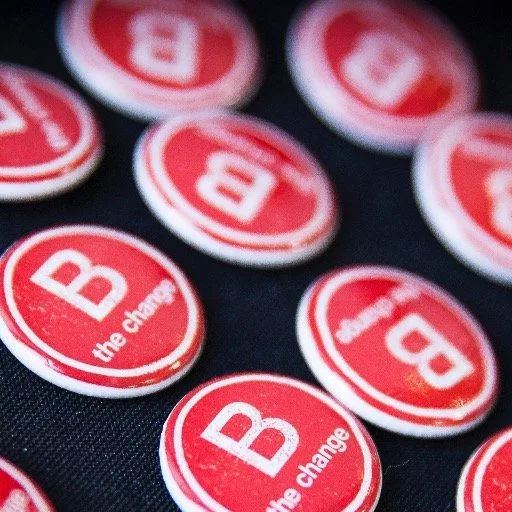When The CAPROCK Group planted our Founding B Corp flag in 2006, it wasn’t clear to us what that really meant. B Lab was inchoate, the concept was nascent, and the group of fellow founders was… well, let’s just say it was diverse. So, while our investment firm secured sufficient points in our maiden voyage through the beta version of the B Survey, we were reluctant to brand ourselves with anything “B”. In part, our hesitation was based on uncertainty. In part on a fear of politicization (just look to the politicization of the environment for a cautionary example.) And in part due to concern that the benefits simply might not outweigh the costs. So, while our internal compass was pointing directly at true north, magnetic north was more than a few degrees off.
What I’d like to do here is give you an overview of a decade of B Corp status. First, I’ll offer five hard-won tips that, had we known them a decade ago, would have made our experience easier, more productive and more engaging. And second, I’ll attempt to derive some sort of notional “B Corp ROI.” Wish me luck.
1. Find a champion
As much as it is an expression of company values, certification is also a non-trivial investment. Which, by the way, it should be! How else are we, as a community of consumers and businesses, to scrub for green-and-good-washing? But go in with your eyes open. Certification can pose an organizational distraction. Costs, while embedded in fixed overhead (see estimated ROI discussion below), are not immaterial. And consensus is required, lest momentum stall. So, unless you have an internal champion, hopefully someone senior, to own and drive the process, certification can be a major pain in the ass. I know that we simply walked away from almost a dozen points two years ago due to nothing more than “certification exhaustion.” (Note: we have experimented with providing an incentive to one employee to drive our B Score. Results are quite encouraging. I’d recommend doing so, if you have the means and culture.)
2. Embrace transparency
Yes, the certification process can be a pain. But it is a fascinating, cool, insightful, high-value and totally useful pain. The foremost reason? Transparency. In the age of radical transparency, marketing claims have limited power. Consumers, employees and investors want — and expect — evidence. In my experience as both an investor and B Corp owner, B Certification is the most comprehensive DNA analysis of a responsible/sustainable company I’ve ever seen. Endure it for the modest burden that it is, but embrace it for the transparency that it delivers.
3. Celebrate debate — and success!
Debate will always swirl around which B-haviors should be prioritized. Even the highest-scoring companies in the world only capture around 60 percent of available points, so there is a LOT of room to argue. Becoming a “Best For The World” company like The CAPROCK Group requires steady, relentless commitment. Your team needs to be aligned. And the best path to alignment is debate. Once you are aligned, it may surprise you how motivating even the simplest initiative success — establishing a private space for nursing mothers, for example —can be.
4. Use the B Survey as a business management tool
Bottom line: once you are part of the tribe, don’t wait for recertification. The more the survey can live within your organization, rather than occupy a dusty mental drawer, the easier recertification will be. Think of the survey as a meditation to guide your daily management decisions rather than a proctologic exam to be endured every two years simply because you believe it is good for you. Choose an initiative, execute, celebrate its completion and then move on to the next one. All year long.
5. Define your message: the why
Decide what message you want B Certification to send, and to whom. An internal statement of vision and values? A stamp of credibility? A market differentiator? Will it help you raise capital? Recruit employees? Think hard about why you are pursuing certification, and embed that “why” in your B management process.
The Bottom Line: What’s the B Corps ROI?
Return on investment is mind-blowingly difficult to calculate in a decision-set as complicated as consumer behavior. But to bring some transparency to the question, let’s take a cut at what that might look like for The CAPROCK Group (you can do a similar back-of-the-napkin exercise for your company):
- Let’s assume that 20 percent of an investor’s choice of advisor is linked to B Corp status (the rest would be things like investment performance, deal flow, personality fit, location, composition of management, etc.).
- Currently, approximately 30 percent of our revenues are linked to self-identified impact investors, implying that 6 percent of our revenues are derived from our certification.
 While that may not seem like a lot, it represents a massive ROI. Why? Certification takes about 100 hours (a reasonable guess). If we presume that our 33-person company works a total of 82,500 hours, that 100 hours represents approximately .1 percent of total hours worked, yet it drives an estimated 6 percent of revenues. I could get lost in the weeds by fully allocating costs, setting that against the average salary for our 100 hours, etc. But I think that, from the perspective of “close-ology”, this rough analysis works. And it may actually be conservative, because it doesn’t include things like staff satisfaction, peer-group reputation, referral support, and so on. And it doesn’t reflect the credit we get from conventional investors for our impact leadership.
While that may not seem like a lot, it represents a massive ROI. Why? Certification takes about 100 hours (a reasonable guess). If we presume that our 33-person company works a total of 82,500 hours, that 100 hours represents approximately .1 percent of total hours worked, yet it drives an estimated 6 percent of revenues. I could get lost in the weeds by fully allocating costs, setting that against the average salary for our 100 hours, etc. But I think that, from the perspective of “close-ology”, this rough analysis works. And it may actually be conservative, because it doesn’t include things like staff satisfaction, peer-group reputation, referral support, and so on. And it doesn’t reflect the credit we get from conventional investors for our impact leadership.
In summary, B Certification can certainly be a pain in the ass. But in our experience, it is 100 percent worth it culturally, philosophically, managerially, operationally, and profitably. And while we would love to have done a few things differently over the past decade, we wouldn’t exchange the experience for anything.
And now we brand everything with that “B-in-a-box” logo.





